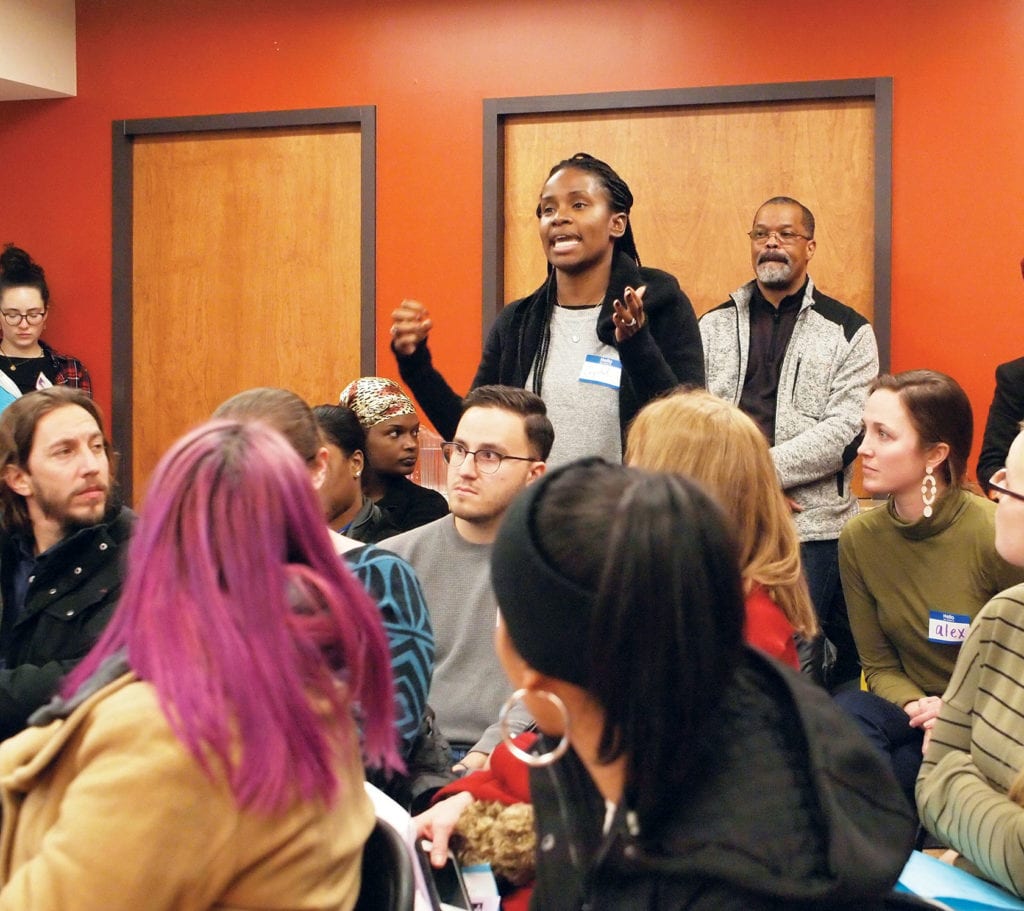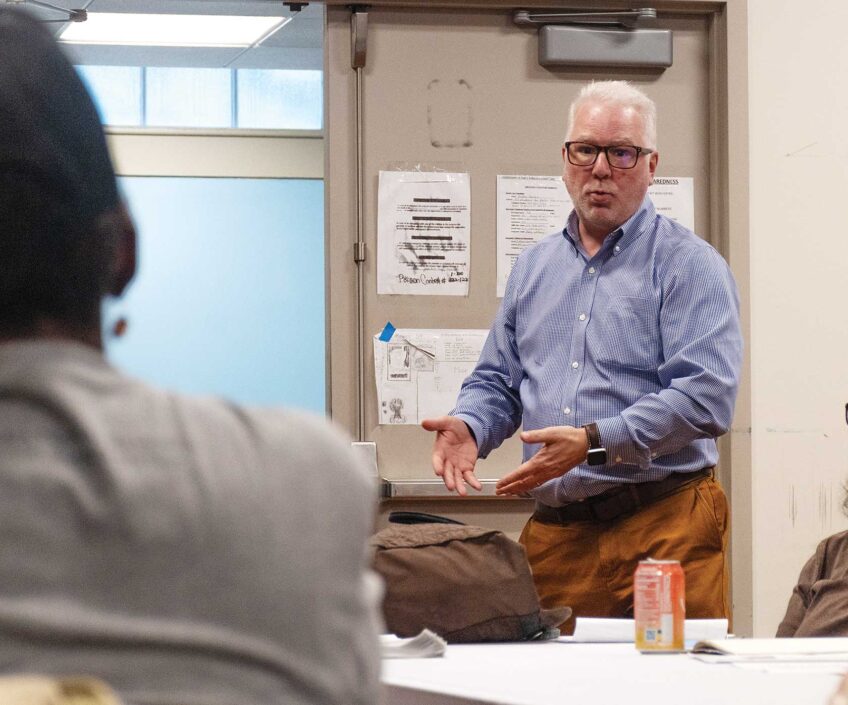Schools again face budget cuts
Some schools lose out as enrollment shifts under weighted student funding

In what has become a yearly ritual in the Boston Public Schools community, parents, teachers and school leaders are grappling with budget reductions and the hard decisions about which staff and services to do without.
The figures are not public, but education activists say they’re hearing of cuts at Blackstone Elementary in the South End, Mather Elementary in Dorchester, P.A. Shaw Elementary in Dorchester, Charlestown High School, East Boston High School, Nathan Hale Elementary in Roxbury and Boston Teacher’s Union K–8 Pilot School in Jamaica Plain.
Under the school department’s student-weighted funding formula, through which schools receive dollar allotments on a per-pupil basis, fluctuations in projected student enrollment can wreak havoc on a school’s budget, forcing cuts to programming ranging from arts to advanced placement courses and SAT preparation.
The ups and downs of school enrollment figures, combined with an overall BPS district budget that isn’t keeping pace with the rising costs of salaries and benefits for school staff, have created what some parent activists call a “Hunger Games” competition for scarce funding.
“I don’t think the weighted student funding formula is adequate because it’s not based on what it costs to fully fund the staffing for specific student populations,” said Boston Teacher’s Union President Jessica Tang.
A spokesman for Boston Public Schools did not answer specific questions about the district’s funding, but issued a statement.
“Boston Public Schools (BPS) and the City of Boston are committed to ensuring all schools maintain financial stability and equity of access to quality educational programming for all students during its annual budgeting process,” the statement reads. “Throughout January, BPS is continuing to finalize its proposed FY20 budget, which will be presented to the Boston School Committee in a public meeting on February 6.”
Boston School Committee Chairman Michael Loconto noted that the district has lost a significant amount of state funding as Chapter 70 education funding has failed to keep pace with the rising costs of education. Additionally, the state has failed to fully reimburse Boston and other cities for funds lost to charter school expansion.
Before weighted student funding was introduced, cuts to cities’ education budget were generally implemented across the board. In 2012, when the current funding scheme was implemented, the Boston district closed eight schools and merged four.
More fair and equal?
The switch to the weighted funding scheme was hailed as a way to make the school funding process more fair. Prior to that time, individual school funding depended in large part on a school community’s political clout, often leaving schools that served low-income populations with fewer resources than those with large middle-class student populations.
Weighted student funding has also long been a component in the so-called portfolio strategy — a corporate-backed education reform movement that seeks to shift the dominant model of school governance away from a strong central district dictating policy to a model in which individual schools — whether public, private or charter — have greater control over how they spend public funds. Under this model, which critics describe as the “backpack full of cash” scheme, public funding migrates with the student from one district school to another or from district schools to charter schools.
In 2016, when charter school proponents sought to lift the statewide cap on charter expansion from the current limit — under which charter schools can claim no more than 18 percent of the budget in any district — opponents, including Mayor Martin Walsh, argued that state’s system for funding charters would destabilize district school systems.
Under the state’s system, when a student leaves a district school for a charter, the per-pupil allocation of city and state dollars follows the student. If a district school loses one student per class in 10 classrooms, each taking with them $20,427 in funding, the school would lose $204,270, but would not necessarily be able to lay off a teacher to offset the loss.
Yet that dynamic is today hitting schools across the city. In Boston, dips in enrollment can come when a school is under-selected — when parents or students do not opt to enroll. It can also happen when the district reconfigures or closes “feeder” schools — such as the elementary schools that feed into a middle school.
While this year’s proposed budget won’t be made public until February, the proposed budget cuts include $500,000 at the Blackstone, $400,000 at the Mather, $168,000 at the BTU Pilot School and $130,000 at the Hale, according to reports from parents and teachers who attended school site council meetings at those schools.
At those schools, principals will be forced to make cuts, which often fall on nurses, librarians, school psychologists, arts programming and other enrichment services.
“School leaders are forced to make very difficult decisions where they end up cutting critical positions,” says Tang. “Just because you have a drop in enrollment doesn’t mean you should have a cut in services to the students still there.”
Ruby Reyes, executive director of the Boston Education Justice Alliance, says the cuts that come through the annual budgeting process disproportionately affect schools with high populations of low-income students, students with disabilities and students who don’t speak English as a first language. As those schools lose access to counselors, libraries and extracurricular activities, the quality of those students’ education is compromised.
“It does away with the concept of quality education for all,” Reyes said. “And what is that actually saying to the children in Boston? If you don’t have the highest scores, you’re not worth investing in.”
Capital investment
The lean funding environment at BPS schools contrasts sharply with the district’s BuildBPS plan, through which the city has pledged to invest nearly $1 billion in capital funds for new buildings and renovations to existing buildings.
Mather school parent Maura O’Toole highlighted that contradiction during last week’s Boston School Committee meeting, noting that the newly-built Dearborn STEM school has a “learning commons” that includes a state-of-the-art library/media center, but no librarian.
“While BuildBPS has big plans for facilities, these plans do not include staffing the said facilities, or the funds to ensure that the facilities will continue after they are constructed,” O’Toole said in written testimony. “Why is this the case? Because budgets are based on projections of students, not on the twenty-first century educational programs and staffing that BPS purports to want to provide to all students.”
The cuts that hit 44 schools last year prompted some parent activists to call for an increase to the basic budget schools receive that would allow for essential positions, programs and school supplies. When weighted student funding was first implemented, that baseline funding was just $200,000 — enough to fund a principal and support staff.
City Councilor Annissa Essaibi-George, who heads the Council’s Education Committee, said that while the weighted formula has merit, BPS cannot ignore the impact of cuts on individual schools.
“I’m a supporter of giving schools autonomy to make decisions that are best for the community,” she told the Banner, “but I think it’s equally important to school communities to say ‘We’ve got you covered’ on certain things, ‘we’re not going to make you choose between a school nurse and an additional classroom teacher.’”







